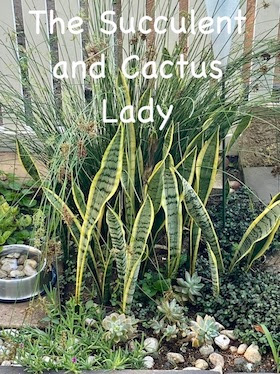Family: Crassulaceae
(krass-yoo-LAY-see-ee)
Genus: Echeveria (ech-eh-VER-ee-a)
Species: glauca (glau-ca) imbricata
Genus: Echeveria (ech-eh-VER-ee-a)
Species: glauca (glau-ca) imbricata
Echeveria imbricata
Echeverias are arguably the most attractive of all
succulents, highly valued for their amazing colours and variation, with the
stunning leaf colour of many varieties at its most brilliant in the cooler
months. Native to the Americas, they are prized by collectors and gardeners the
world over. Their rosettes range in size from 2cm to 50cm in diameter. They
generally flower in the warmer months with colours ranging from green to pink
to red.
Echeveria imbricata exhibiting pink tinges on
the tips of its leaves
.
.
Most Echeverias are summer growers. Once established they
can tolerate extended dry periods without watering but will grow stronger if
they receive adequate water during their growing season.
As my trees got bigger, the shade started taking over my Echeveria patch.
.
Here in Tarlton (Gauteng, South Africa) they do not seem to be able to withstand the severe frost we get, and a couple of winters ago I lost half this stock. So I've resorted to putting them all into pots and various other containers which can be brought inside or under cover during the winter months
.
Here in Tarlton (Gauteng, South Africa) they do not seem to be able to withstand the severe frost we get, and a couple of winters ago I lost half this stock. So I've resorted to putting them all into pots and various other containers which can be brought inside or under cover during the winter months
Free-draining,
porous soil is essential to prevent root rot. Echeverias are shallow rooted
plants and therefore benefit from good levels of organic matter in the soil.
Good ventilation is important for minimising pest and disease risks. Generally,
the more sun they get the better they will display their colours and shape, but
protect them from excessive sun during hot weather.
Echeveria imbricata sharing a wooden crate with some Aloes
Echeverias sharing space with Crassula imperialis in an Everite container
Echeverias in terracotta pots, ready to go under cover
for the winter
As it does not tolerate temperatures below 7°C (45°F), in
temperate regions it is grown under glass with heat. Like others of its kind,
it produces multiple offsets (called pups) which can be separated from the
parents in spring, and grown separately – hence the common name “hen and
chicks”, applied to several species within the genus Echeveria.
However, one must be beware of the problem of common
names. Hens and Chicks is a very poor name for this plant because it leads one
to assume that it is the same category of plants called Sempervivums, also
known as Hens and Chicks. But this is a far different plant – it is NOT an
alpine succulent, but a Mexican succulent with very little cold hardiness, unlike the
Sempervivum. This plant cannot survive temps much below freezing. It is nothing
like a Sempervivum, and looks very little like one, too, other than being a
succulent rosette. Please do not confuse the two or you will sorely
disappointed when your ‘Hens and chicks’ melts to mush after the first real
freeze.
When planted closely together, Echeveria will form very tight rosettes, so be sure to give them enough space to fully open up.
Echeveria imbricata in an Everite pot
Happiness is more than just a state of mind, it's also a
state of being, an act of spiritual courage. It's a joy thing. Like an
Echeveria.
::












No comments:
Post a Comment